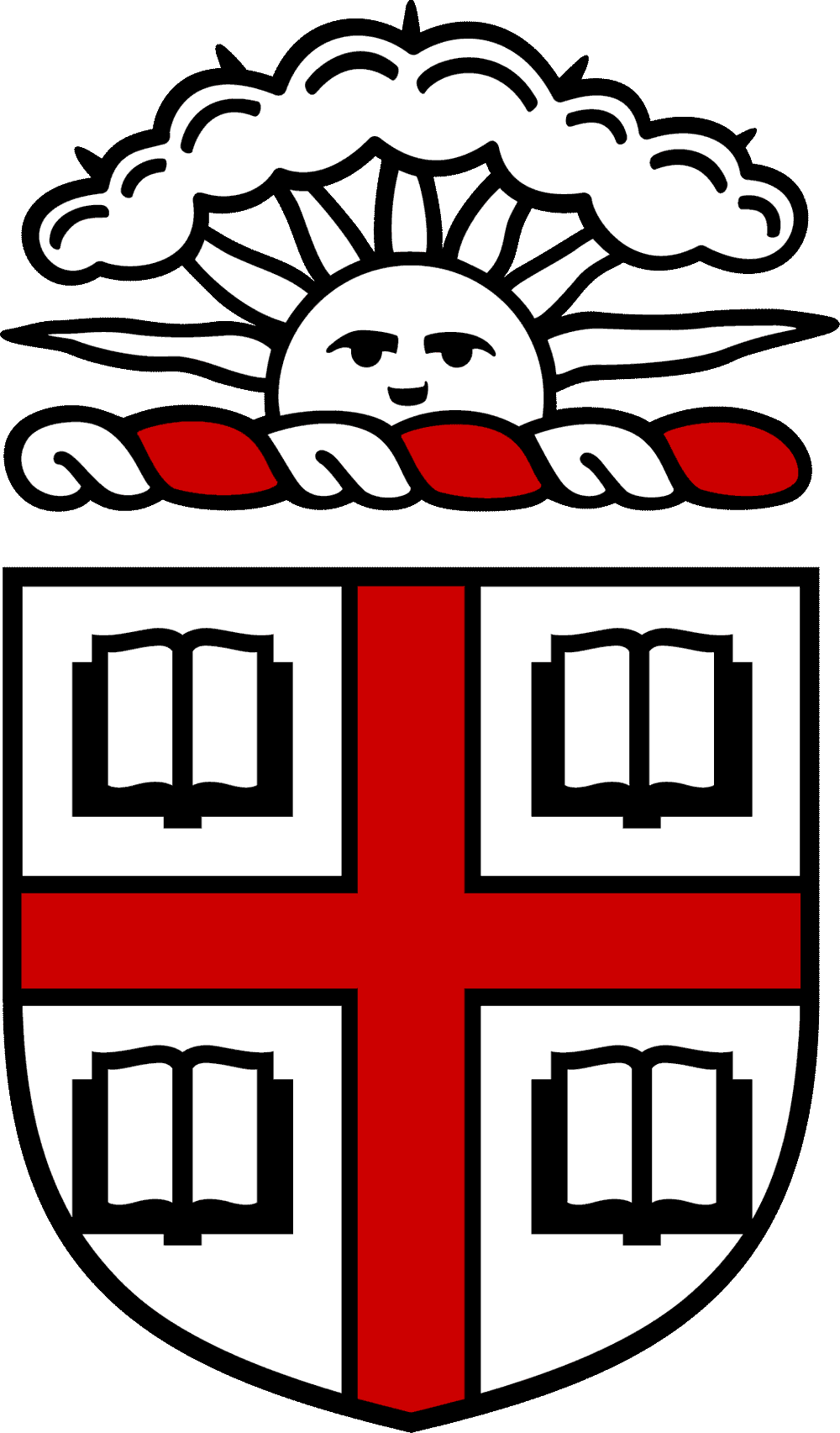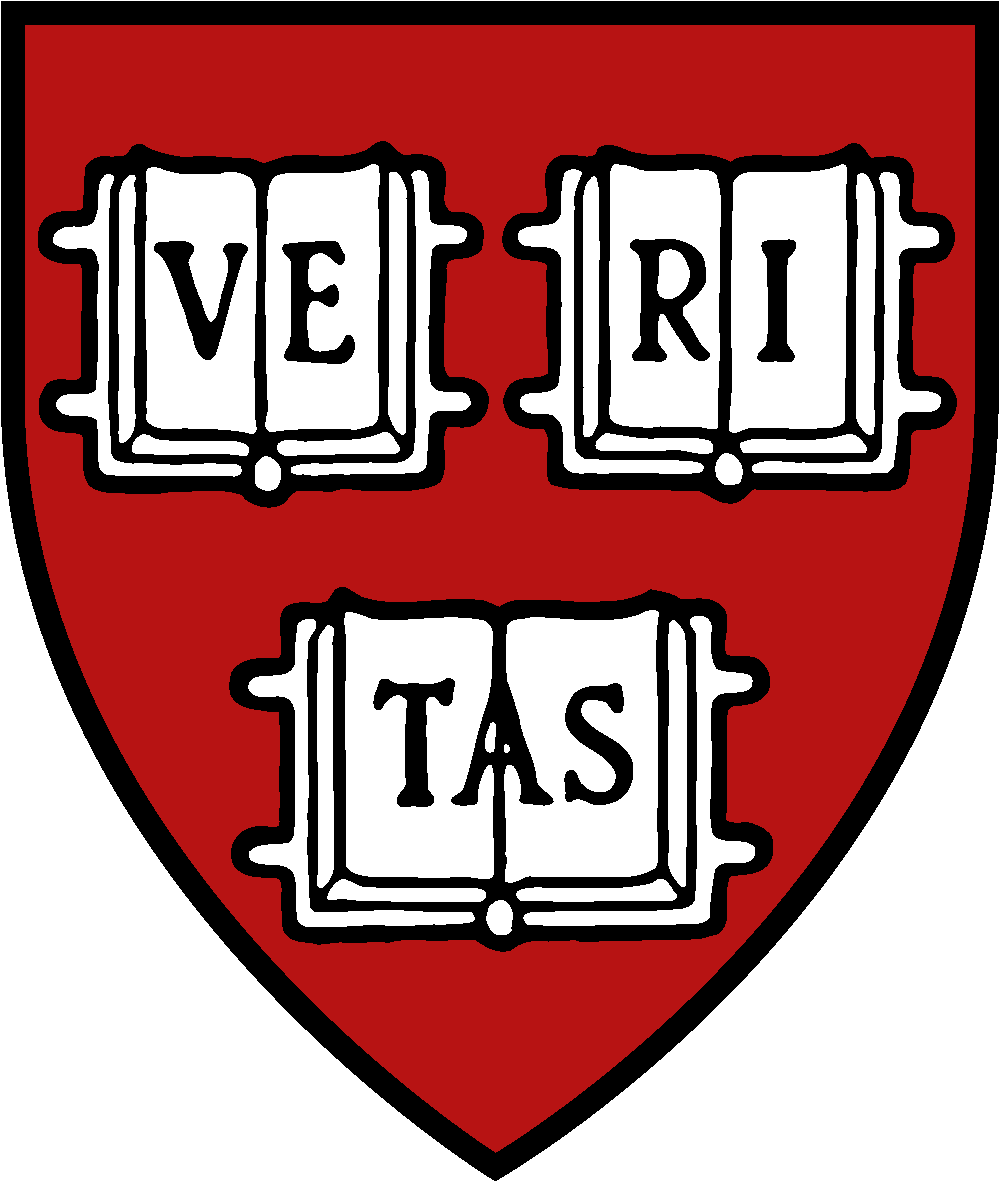Life & The Cost of Living in Havana
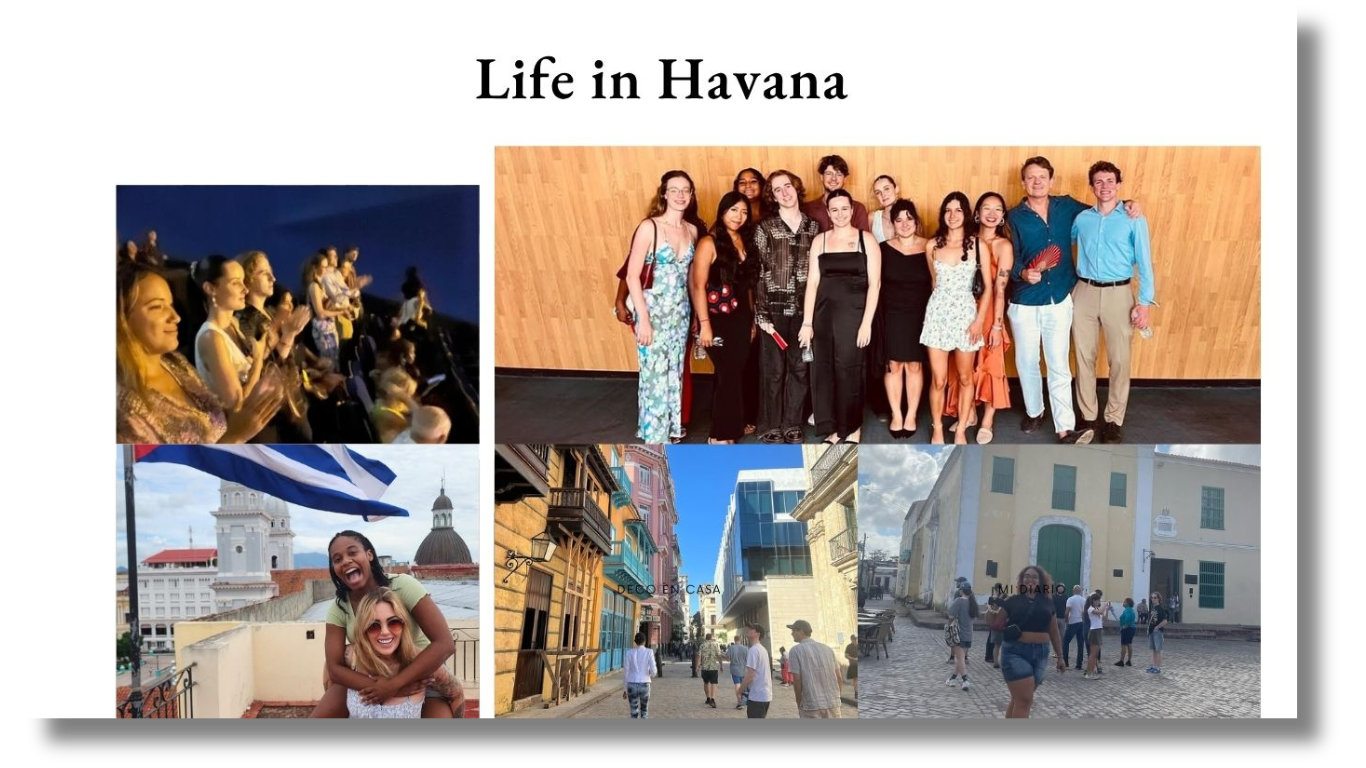
Students reside in the municipality of the Plaza of the Revolution — in the leafy, tree-lined streets of the Vedado neighborhood — and take classes at two prestigious educational and cultural institutions. The program's host institution, Casa de las Américas, is just steps away from the famous Malecón promenade, the Cuban Ministry of Foreign Relations, and the Institute for International Relations. The University of Havana is located in the heart of the city, between 23rd Avenue and the Plaza of the Revolution. Vedado’s 23rd Avenue is home to Havana’ most important cinemas, which host the Festival of New Latin America Cinema each December and show a wide variety of films from across the world each week. Vedado’s second important thoroughfare, Linea, is home to Cuba’s theater district.
This area of Vedado is also home to important institutions like the Cuban Institute of Radio and Television, the Cuban Film Institute, the Ministry of Labor and Social Security, the Ministry of Health, the Ministry of Sugar, the Association of Young Artists “Hermanos Saíz,” the Cuban Chamber of Commerce, the Union of Artists and Writers of Cuba (UNEAC), and many other important national institutions.
The neighborhood of Vedado is seen by many in Havana as the contemporary heart of the city. Many of the city’s public transportation networks converge in the neighborhood, connecting students to the diverse neighborhoods that make up Cuba’s capital.
Much social life in Havana’s populous neighborhoods takes place in public spaces, on stoops of crowded apartments, in parks, in street-corner domino games of the older generations, and street soccer games of Havana’s youth. The Coppelia Ice Cream parlor on the corner of 23rd and L and the Malecón, known as Havana’s living room, are emblematic traditional social spaces for many Cubans. More recently, numerous public WiFi areas have become new spaces of socialization in the city. Theses parks allow students and locals to keep in touch with family and friends abroad. Since 2011, a new group of privately owned bars, restaurants, gyms, bakeries, and shops have emerged, providing spaces of socialization for foreign visitors and a small group of economically privileged locals.
To get to know the diverse cultural activities programmed in Havana, check the “Carteleras” published by Ministry of Culture:
Cultural platforms of the city
Aguacero - Cultural dissemination platform
Aguacero
La Papeleta, Mincult cultural billboard
La Madriguera AHS - La Habana
AHS - Official Page of Young Art
Ludwig Foundation of Cuba, - Young Art and Culture.
Cartelera Cultural OnCuba
Program Costs
Before arriving in Havana, you should budget your anticipated expenses for the entire semester. The budget should take into account spending on transportation, cell phone data, school materials, eating out, cultural and social activities, as well as independent travel.
The budget presented below is approximate and reflects basic expenses – based on previous student experiences – that you should account for in your financial planning. It does not include estimates for personal independent travel outside of Havana nor for social activities, as these expenses will vary widely by each individual student.
Please note that due to economic sanctions against Cuba, it is practically impossible to withdraw cash or use US-issued debit or credit cards. It is also very difficult to transfer hard currency to Cuba. Please plan ahead financially and take as much cash (USD or EUR) with you as you think you will need. If your financial situation allows, bring a little more cash than less, and take back home whatever money you do not spend.
Cost Table
| Expense | Expense Type | Fall 2025 | Spring 2026 |
| Program Fee* | Billed by home institution | Refer to home institution | Refer to home institution |
|---|---|---|---|
| Housing Fee (includes housing, loundry and partial board/breakfast and dinner) | Billed by home institution | $5,200 | $5,200 |
| Health Insurance (this refers to home school insurance; all students are enrolled in Cuban health insurance at no additional cost) | Billed by home institution | Refer to home institution | Refer to home institution |
| Airfare (round-trip flight to Havana; varies depending on departure location) | Direct Student Cost | $1200 | $1200 |
| Partial Board (lunches) | Direct Student Cost | $600 | $800 |
| Baggage Fees*** | Direct Student Cost | varies | varies |
| Personal (estimate varies according to individual spending habits) | Direct Student Cost | $1000 | $800 |
| Local Transport | Direct Student Cost | $300 | $200 |
| Books/Printing | Direct Student Cost | $50 | $50 |
| Immunizations and Medications (if applicable and not covered by insurance) | Direct Student Cost | n/a | n/a |
| Internet/Communication | Direct Student Cost | $220 | $150 |
Program Fee includes: pre-departure and on-site orientations, in-program cultural activities and excursions.
CASA Cuba Withdrawal Policy
Should you who withdraw from the program, you will be charged a non-refundable housing fee according to the following table:
Needs to be updated to CASA wide new withdrawal policy
Housing & Withdrawal Costs
| Withdrawal Date: | Fee: |
| 61+ days prior to the start of the program | 0% of housing cost |
| 60-31 days prior to the start of the program | 50% of housing cost |
| 30-1 day prior to the start of the program | 75% of housing cost |
| Program start date or after | 100% of housing cost |
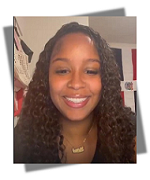 Student Testimony
Student Testimony
Nairim Cespedes Rivan
Brown University.
Spring 2025.
Opinion on Costs in Havana.
DAILY LIFE
Havana is a large, cosmopolitan city located on the ocean. Its history spans more than five hundred years and reflects a wide range of cultural influences. The city has a vibrant street life, and much of the city's day and night life happens outdoors. Musical and cultural events unfold constantly.
Nearby distances are walkable. It is safe and normal to walk, but the tropical heat can be an impediment to longer distances. Collective taxis (maquinas) and Cuban uber (la nave) are the most commonly used means of transportation by CASA students and local population. Bikes can be used with care but are not provided by the program.
Cuba is an island in the tropics. It is always warm and humid, with a few fresh days in the winter months. New private cafes, bars, and venues are often climatized, while many other institutions (universities, schools) are not.The early months of the fall semester happen during the late rain and hurricane season. Cuba has fewer places with A/C than other highly developed countries, but your room and the CASA center are both air conditioned (while the University of Havana is not). Be prepared to sweat a lot, especially between late April and October. Be sure to bring light, comfortable clothes.
Classes at the CASA Center are about a 5-10 minute walk from your homestay, while University courses are about a 20-30 minute walk, or a 5 minute taxi ride.
You will live with Cuban families in your homestay in the central district of Vedado, which is within walking distance to the CASA Center. El Vedado is the cultural hub of Havana. Cultural institutions, theaters, the University, some embassies, and parks are located here. It borders the beautiful oceanfront, or the Malecón de la Habana.
Breakfast and dinner are included in the homestay fee, while students should budget separately for their lunch. During field trips and program activities, CASA will cover breakfast and either lunch or dinner.
It is not yet very common or widespread to be vegan/vegetarian in Cuba. In fact, meat is considered a welcome luxury by most. Yet, there is a growing vegetarian and vegan consciousness and options at most restaurants. Our homestay families are very accustomed to providing vegetarian and vegan food as well as accommodating other specific dietary needs. And in Cuba there are many healthy, local, and organic fruits and vegetables to be found that can enrich your diet.
You will have less structured time than at your home campus. You will take about four classes that meet twice a week for 90 minutes, plus some co-curricular activities. The reading expectation is less, However, navigating daily life in a foreign country with a different language,a much less developed infrastructure, and a tropical climate can take more time and be more taxing. We recommend taking the first few weeks to adapt and adjust before taking on major responsibilities or time commitments.
It is important that you communicate your needs as early as possible with program staff. As a less developed country, Cuba has fewer options for offering cost-intensive accommodations. Yet, our local colleagues and host institutions are very helpful, understanding, and adaptive. Disability laws, resources, and practices vary, so you may not receive exactly the same accommodations when you are abroad as at your home institution. See the Health & Safety page for more details.
ARRIVAL & DEPARTURE
Please note that you will only be able to enter Cuba on or after your academic visa start date. Program housing is provided beginning on the program start date only.
Can I leave early or late from my study abroad program?
You can not stay beyond your academic visa expiration date, which coincides with the official program dates. We require students to stay through the end of the program as final presentations are usually scheduled for the last week of the program. Special adjustments in emergency situations may be made.
ACADEMICS
Students take at least four classes that usually meet twice a week for 90 minutes. Classes start at 9am and usually end at 4:30pm, Monday through Friday. Few classes take place on Friday, and this is the day when CASA arranges for most site visits.
You may take classes at the University of Havana and Casa de las Américas.
You will enroll in CASA courses alongside other CASA students in the cohort and invited Cuban students. For university classes, students are in class with local students, other international students, and possibly some students from their CASA cohort.
It is required that you enroll in a total of 4 classes. The CASA Lunch Seminar (Tuesdays) and Site Visits (Fridays) are highly recommended for a better understanding of contemporary Cuba.
Course selection and registration happens onsite in Havana, in-person and on paper, two weeks after your shopping period. You will receive academic advising from CASA staff as part of the pre-departure virtual programming and will discuss preliminary coursework in which you would like to enroll.
You should inquire further about the credit transfer process with your home school study abroad office as these policies may vary across institutions.
In most cases, professors will communicate your grade directly to you upon completing final coursework. The processing of the official transcript may take several weeks after completion of the program.
COSTS & FEES
You can find the full program costs here (link to program costs page). Please note that certain charges will be billed directly to students and/or their home school, while other charges are the responsibility of the student and should be accounted for in their overall program budget and cost of attendance.
Budgeting can vary depending on your personal spending habits. That said, we have put together a suggested budget here (link to Program Costs) based on the current standard of living in Cuba and previous student feedback. As a rule of thumb, we recommend bringing 2,000 USD in cash with you for the entire semester and a minimum of 1,000 USD. You will not be able to use a US credit or debit card in Cuba, and it is very difficult to send money to the country. Therefore, you need to plan ahead to bring cash with you.
Most students who receive financial aid are able to apply these funds to their study abroad semester to their CASA study abroad semester. Please contact your home school study abroad advisor and/or Office of Financial Aid for additional information.
There may be withdrawal fees depending on the date of program withdrawal. Please work with your home school study abroad office to determine exact withdrawal costs. To see withdrawal dates and fees set by the program, please see the Program Costs page [provide link].
EXCURSIONS & ACTIVITIES
Yes. CASA Cuba includes a number of excursions throughout the semester. Please see the Excursions & Activities page for more information.
Yes. CASA Cuba includes volunteer, research, and internships as optional opportunities that help you become more immersed in the local culture. Please see the Internships, Research, and Volunteering page for more information.
HEALTH & SAFETY
Please visit the Center for Disease Control and Prevention website to reference updated guidance on recommended vaccinations and hygiene while in CASA Cuba.
Prescribed medication regimens are important to your health and well-being. We strongly recommend bringing all necessary medication for the duration of your program with you. There is a shortage of medicine in Cuba, and you may not always find all the medicine you desire or need. It may be necessary to obtain a medical provider note or prescription documentation in order to travel with your medication. We encourage you to contact International SOS for detailed guidance on traveling with medication to Cuba.
Yes. Please see the Health & Safety Page.
DIVERSITY & BELONGING
The LGBTQ+ climate in Cuba is evolving positively. Cuba has a new, very progressive family code that prohibits any kind of discrimination on the basis of gender or sexual orientation, and legalizes same sex marriage and gender changes, among other rights. A profound cultural change is happening in a traditionally Catholic and machista society. A public institution CENESEX is pushing LGBTQ+ rights and agendas actively in Cuban civil society. As the capital, Havana is Cuba’s most progressive and diverse city.
Cuba, and especially Havana, is and has been culturally and ethnically diverse. Any form of discrimination based on ethnicity, religion, gender, etc. is illegal and punishable. However, racial and gender dynamics (and forms of discrimination) do exist. Rising socio-economic inequalities in Cuba have also racialized components and racial differences are visible. These new forms of racial discrimination are widely debated in Cuban civil society by academics, governmental institutions, and activists alike. Students may also find that as foreigners, even members of a visible minority, their foreignness may be more relevant than their minority status. These issues, their roots, current dynamics and actors who work against forms of racial, gender or other forms of discrimination will be addressed and discussed by program activities and classes.
In Cuba, the general religious make-up is very plural. While the majority of the population might identify as Catholic, the influence of the Catholic church is much weaker than in other places in Latin America. Afro-Cuban religions have a strong presence, as do non-religious people. Cuba became officially an “atheist” state in 1976, since 1992 it is “laic.” Both historically and with the more recent rise of international tourism and visitors Jewish, Muslim, Orthodox, Hindu, Protestant and other religious communities have become more visible and their institutional presence has increased.
As Cuba is an underdeveloped island in the Caribbean that faces economic sanctions, the diversity of imported goods is limited. It has improved considerably over the last couple of years, and you can find a diverse range of food selections. However, you may have to look for it some more than usual and/or ask your host family, program staff or other locals for details. If you have very specific and indispensable dietary needs, you should consider bringing some packaged food with you.
Please note that the local public education system in Cuba does not allow for academic accommodations based on religion and will not offer alternative arrangements for exams/field travel, etc. That being said, arrangements can be made for CASA Center courses in coordination with the program director.
APPLY/ELIGIBILITY
Application instructions can be found on the Apply page study abroad office.
CASA member students should work with their home school study abroad office.
Non-CASA member visiting students, should contact:
Brown’s Office of Global Engagement / globalbrown@brown.edu
Generally, six semesters (or the equivalent) level of Spanish is required. Please work with your study abroad office regarding language requirements and eligibility. You may be asked to take a placement exam if you have not taken university-level coursework at the required level.
CASA Cuba staff, both in the US and overseas, offer comprehensive pre-departure virtual orientations, resources, and support to prepare you for your semester abroad. This will include guidance on academics, housing, program calendars, visas, internships, orientation, and more.
Yes. A visa is an official authorization, typically placed in your passport, from a foreign government that shows you have permission to enter a country and stay for a specific period of time for a specific purpose. You will receive a D-2 academic student visa to study in Cuba for academic purposes only.
